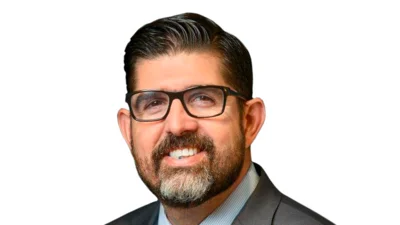Eustachian tubes are responsible for equalizing ear pressure and draining fluid from the middle ear. | Pexels/Karolina Grabowska
Eustachian tubes are responsible for equalizing ear pressure and draining fluid from the middle ear. | Pexels/Karolina Grabowska
• Causes of eustachian tube dysfunction (ETD) include allergies, a common cold, the flu or chronic acid reflux.
• ETD may resolve on its own, but if symptoms last longer than two weeks, it's recommended to see a doctor.
• One treatment option is eustachian tuboplasty, also known as eustachian tube balloon dilation.
ETD is a condition that leads to ear fullness, pressure, popping and crackling, according to Dr. Mariah Pate of Tampa Bay Breathe Free Sinus & Allergy Centers. It is common to experience ETD on airplanes or when going into a higher altitude, she said.
"This condition is very common and really goes hand-in-hand with sinus and allergies," Pate told Nature Coast Times. "I'm sure you have friends or family members who can never clear their ears. Some dysfunction is very common, and it does affect many people. It leads to having decreased hearing, pressure, fullness and popping throughout the day. This condition can be difficult to treat. It can be caused by many different problems, but many times it's due to sinus and allergies and is very closely related to those problems."
The same balloon procedure that is often used for sinus issues can also resolve eustachian tube dysfunction.
The eustachian tube connects the middle ears to the upper throat. If the tube becomes blocked, it can lead to hearing problems, ringing in the ears, balance issues, discomfort similar to an ear infection, or a feeling of fullness in the ears, according to the Cleveland Clinic. This condition is called ETD, and it can be caused by allergies, a common cold, the flu or chronic acid reflux. The symptoms could get worse with altitude changes, such as on an airplane or while scuba diving.
ETD frequently resolves on its own, but if symptoms last for more than two weeks, it's recommended to visit a doctor. At-home remedies to resolve ETD include chewing gum, yawning, swallowing or using a saline nasal spray. People whose ETD has been caused by allergies could clear up their symptoms by using an antihistamine or other over-the-counter medications. People whose ETD has been caused by an infection might be prescribed antibiotics.
If at-home remedies or medications do not resolve ETD, a doctor might recommend a surgical treatment. One option is eustachian tuboplasty, also known as eustachian tube balloon dilation. This surgery is relatively new and involves a doctor inserting a small balloon through the nasal passage into the eustachian tube and then inflating the balloon. The balloon remains inflated for about two minutes before the doctor deflates and removes it. Patients typically recover from this surgery within one day.
Other surgical treatment options for ETD include myringotomy and pressure equalization tubes. During a myringotomy, the doctor makes a small incision in the eardrum, allowing fluid to drain from the middle ear. Patients typically need three to four weeks to recover. Pressure equalization tubes are placed by a surgeon inside the eardrum and allow for proper ventilation to the middle ear. The tubes are typically left in place for 12 to 18 months.
If you're interested in learning more about diagnosis or treatment of ETD, please take this Sinus Self-Assessment Quiz.


 Alerts Sign-up
Alerts Sign-up